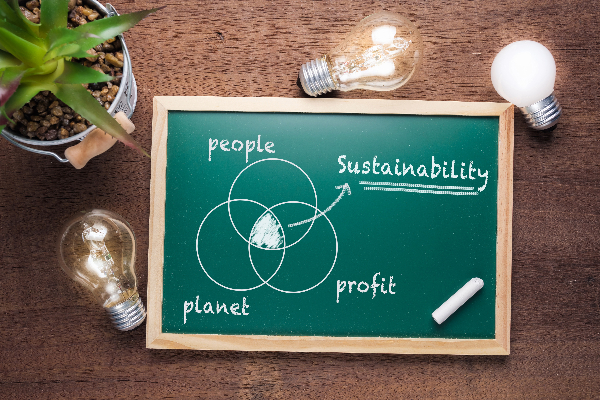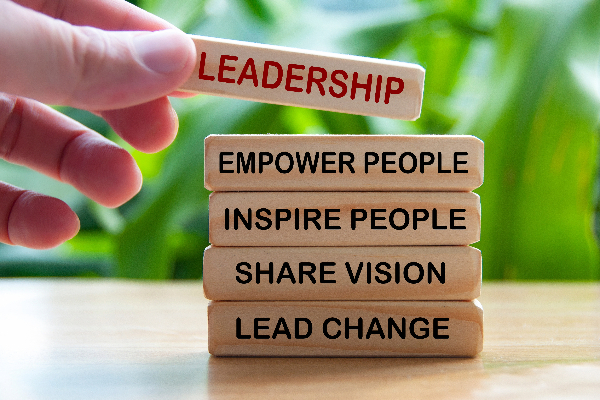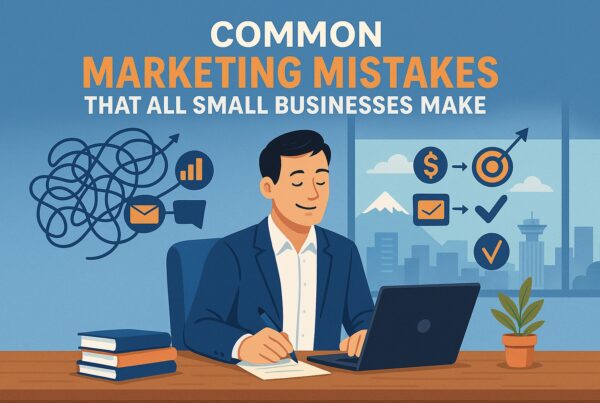Crafting a Sustainable Journey: How Your Mission Statement Can Lead the Way
Businesses are crucial in mitigating negative impacts and driving positive change in a world facing an ever-growing environmental crisis. The journey towards a sustainable future starts with a powerful mission statement outlining your company’s commitment to upholding environmental and social responsibility. But how do you craft a mission statement that resonates with employees and customers and inspires them to take action? This blog post will guide you through creating a sustainability-focused mission statement, integrating sustainability into your company’s core values, and engaging employees in “A sustainable journey: how your mission statement can lead the way”.

Key Takeaways
- Mission statements are powerful tools for driving sustainability initiatives and reinforcing a company’s environmental and social responsibility commitment.
- Crafting an effective mission statement involves clarity, relevance, and inspiration to motivate stakeholders to take action.
- Companies can successfully promote sustainable practices by integrating them into their core values, communicating the message clearly with stakeholders, and implementing programs & initiatives aligned with these values. Monitoring progress & adjusting strategies accordingly. Engaging employees in the journey through recognition & rewards.
The Power of a Mission Statement in Sustainability

A company’s mission statement is the cornerstone of its organizational culture, serving as a guiding light for its actions and decisions. When it comes to sustainability, a compelling mission statement gains strength, propelling sustainable business practices and motivating employees to lessen their environmental footprint.
As concerns about climate change and environmental degradation grow, more companies realize the importance of incorporating sustainability into their mission and vision statements. An effective mission statement forms the bedrock of a company’s sustainability journey, highlighting its pledge to environmental responsibility and social consciousness.
Why a mission statement matters for sustainability
Mission statements are not mere words on paper but the backbone of a company’s sustainability journey. A well-crafted mission statement outlines the company’s commitment to upholding environmental and social responsibility and serves as a guiding force for the organization’s actions. Aligning your company’s mission statement with sustainable business practices is essential to creating a sustainable future, as it accurately reflects the organizational culture and sets the stage for achieving sustainability success.
Sustainability encompasses various issues, from environmental impacts to social and business considerations. According to Vinay Shandal, Senior Partner at Boston Consulting Group, sustainability is about climate change and wider business issues critical for achieving sustainability success. Formulating a mission statement encapsulating these broader issues allows companies to develop a sustainability vision that strikes a chord with employees, customers, and stakeholders.
How a mission statement drives sustainable actions
A well-crafted mission statement can serve as the spark that ignites sustainable actions within a company. A mission statement can play a crucial role in adopting sustainable practices across the organization by inspiring and motivating employees, customers, and stakeholders to participate in and support environmentally responsible actions.
For instance, many organizations are now evaluating the sustainability of their supply chains, considering factors such as their partners’ carbon footprints, the materials used by suppliers, and the environmental and social repercussions of their operations. Electric vehicle makers, for example, must consider the procurement of components for batteries, end-of-life management, and their overall carbon footprint when formulating sustainability initiatives.
Harmonizing their mission statement with these overarching sustainability goals allows companies to guarantee their actions contribute to a sustainable future for future generations.
Ready to transform your business into a sustainable powerhouse? Let’s collaborate to design customized sustainability strategies that reduce your environmental footprint and boost your bottom line. Reach out to me today, and together, we’ll pave the way for your business’s greener, more profitable future.
Crafting a Sustainability-Focused Mission Statement

Creating a sustainability-focused mission statement is no easy task, but it is essential in setting the stage for a company’s sustainable future. To craft an effective mission statement, organizations must prioritize their sustainability objectives and initiatives, ensuring that their mission statement reflects their commitment to environmental and social responsibility.
A well-crafted mission statement should be clear, relevant, and inspiring, demonstrating the organization’s dedication to sustainability and motivating employees, customers, and stakeholders to take action. Adhering to these guidelines enables companies to design a sustainability mission statement that captivates their target audience and catalyzes sustainable business practices.
Key elements of a sustainability-focused mission statement
When crafting a sustainability-focused mission statement, several key elements must be considered. First, the mission statement should be clear and concise, ensuring all stakeholders easily understand it. This will ensure that everyone knows the same objectives and works towards the same goals.
Second, the mission statement should be relevant, reflecting the company’s core values and goals related to sustainability. Connecting the mission statement with the company’s core values injects more significance, steering its actions toward sustainability.
Additionally, a successful sustainability mission statement should:
- Be consistent with the company’s overall vision and objectives
- Serve as a guiding force for the company’s actions
- Help drive sustainable practices throughout the organization.
Examples of effective sustainability mission statements
Several companies have crafted mission statements communicating their environmental and social responsibility commitment. Patagonia, for example, is known for its mission statement, “We’re in business to save our home planet.” This bold statement reflects the company’s dedication to sustainability and inspires action among employees, customers, and stakeholders alike.
Another example is Unilever, which has a mission statement that reads, “Doing what is right for people and nature.” This statement demonstrates Unilever’s commitment to sustainability, emphasizing the importance of both environmental and social responsibility in the company’s decision-making processes.
These mission statements are powerful examples of how companies can effectively communicate their dedication to sustainability and drive sustainable actions within their organizations.
Sustainability into Your Company’s Core Values

Embedding sustainability in a company’s fundamental values is pivotal in propelling sustainable business practices. By embedding sustainability into the organization’s culture, companies can ensure that their actions consistently and cohesively align with their sustainability goals.
Infusing sustainability into a company’s core values guarantees alignment with its mission statement and cultivates a uniform approach to environmental and social responsibility. This can help to build trust and support among employees, customers, and stakeholders, further driving the adoption of sustainable practices throughout the organization.
Aligning values with sustainable business practices
Creating a consistent approach to environmental and social responsibility begins with aligning a company’s values with sustainable practices. To do this, organizations must establish a sustainability mission statement reflecting their commitment to being socially responsible and then communicate these values to stakeholders.
Companies such as Patagonia, Unilever, and Interface have successfully aligned their values with sustainable practices by crafting mission statements emphasizing their dedication to sustainability. These companies have demonstrated their commitment to environmental and social responsibility and set an example for other organizations looking to align their values with sustainable business practices.
Communicating sustainability values to stakeholders
Effectively communicating sustainability values to stakeholders is key to building trust and support for a company’s sustainability efforts. By demonstrating their commitment to sustainability through their mission statement and core values, companies can foster a sense of shared responsibility among employees, customers, and investors.
For efficient communication of sustainability values, organizations can generate sustainability reports, orchestrate sustainability events, and implement marketing campaigns with a sustainability focus. These initiatives can help to raise awareness of the company’s commitment to sustainability and encourage stakeholders to support and engage in sustainable actions.
Implementing Sustainable Practices Throughout the Organization

Implementing sustainable practices throughout an organization requires a comprehensive approach involving top-level management and individual employees. By assimilating sustainability into the company’s mission statement and core values, organizations can lay the groundwork for sustainable business practices that infiltrate every company stratum.
To ensure the success of these sustainable practices, companies must establish sustainability programs and initiatives, monitor progress, and adjust their sustainability strategy as needed. This holistic approach ensures that every aspect of the organization contributes to its sustainability goals and helps to drive continuous improvement.
Establishing sustainability programs and initiatives
Establishing sustainability programs and initiatives that align with a company’s mission statement and core values is key to driving sustainable business practices. By creating programs and initiatives that support environmental and social responsibility, companies can reduce their ecological footprint and enhance their reputation and competitive advantage.
Examples of sustainability programs and initiatives include reducing energy and water consumption, utilizing renewable energy sources, and implementing waste reduction and recycling programs. By establishing these programs and initiatives, companies can guarantee that their actions align with their mission statement and core values, fostering a unified approach to sustainability.
Monitoring progress and adjusting strategies

Monitoring progress and adjusting strategies is essential for ensuring continuous improvement and achieving sustainability goals. By tracking progress and making necessary adjustments, companies can identify areas for improvement and ensure that their sustainability efforts remain on track.
Best practices for monitoring progress and adjusting strategies include:
- Utilizing progress monitoring techniques to track performance
- Gathering and analyzing data to inform decision-making
- Incorporating short-cycle formative assessments to monitor learning throughout lessons
- Establishing goals for individuals or teams to provide a clear direction and focus for monitoring progress.
By implementing these best practices, companies can ensure the success of their sustainability programs and initiatives, demonstrating sustainability leadership in their respective industries.
Engaging Employees in the Sustainable Journey

Engaging employees in the sustainable journey is crucial for the success of a company’s sustainability efforts. By providing training and resources, establishing clear expectations, and rewarding employees for their efforts, companies can empower their employees to take an active role in their sustainability initiatives.
By engaging employees in the company’s sustainability efforts, organizations can foster a culture of sustainability within the company and ensure that every individual contributes to the company’s sustainability goals. This collaborative approach can help to drive sustainable practices throughout the organization and contribute to a more sustainable future for all.
Empowering employees to take action
To empower employees to take action in their daily work, companies must provide them with:
- Training on sustainability topics
- Access to educational materials, workshops, and seminars on sustainability
- Resources such as tools and technology to facilitate sustainable choices
By providing this training, resources, and support, the executive team ensures employees will be better equipped to make sustainable choices in their work.
Empowering employees to act enables companies to boost employee engagement in sustainability efforts and guarantees that their actions contribute to the company’s overarching sustainability goals and objectives. This collaborative approach can help to drive sustainable practices throughout the organization and contribute to a more sustainable future for all.
Recognizing and rewarding sustainable achievements
Recognizing and rewarding employees for their sustainable achievements is an important part of fostering an organization’s sustainability culture. Some ways to do this include:
- Offering bonuses to employees who consistently exhibit sustainable behaviour
- Giving awards to individuals or teams who have made significant contributions to sustainability initiatives
- Providing public recognition and praise for employees who consistently practice sustainable habits
By offering these incentives, companies can promote continuous improvement and fuel sustainable practices across the organization.
Some methods for recognizing and rewarding sustainable achievements include:
- Affirmation, feedback, and rewards
- Meaningful and personalized recognition
- Unique rewards
- Peer-to-peer recognition
- Non-financial recognition
- Inclusive participation
By implementing these recognition and reward strategies, companies can encourage employees to take an active role in their sustainability efforts and ensure that their actions contribute to the company’s overall sustainability goals and objectives.
Summary
In conclusion, crafting a sustainability-focused mission statement and integrating sustainability into a company’s core values are essential in driving sustainable business practices. By engaging employees in the sustainable journey and providing them with the necessary training, resources, and support, companies can ensure that their actions contribute to a more sustainable future for all. As more companies recognize the importance of sustainability in today’s world, they must take action to create a lasting positive impact on the environment and society. Together, we can work towards a more sustainable future.
Frequently Asked Questions
Why is it so important to create a sustainable mission statement?
Creating a sustainable mission statement is essential to ensure success and a positive organizational culture, help stakeholders understand the company values, goals and actions, and provide the foundation for sustainability efforts. It also serves to direct employee actions toward long-term business success.
How do you start a sustainability journey?
Start your sustainability journey by engaging stakeholders, setting a strategy, investing in infrastructure and reporting, assessing impacts, allocating responsibility and budget, setting targets, embracing transparency, pivoting business models, investing in nature and tracking progress. Engage stakeholders to understand their needs and expectations. Set a strategy to guide your sustainability journey. Invest in infrastructure and reporting to ensure accurate and timely data. Assess impacts to identify areas of improvement. Allocate responsibility and budget to ensure accountability. Set targets to measure progress. Embrace transparency to build trust. P
What is an example of an environmental mission statement?
We strive to reduce our environmental impact by conserving energy, water and other natural resources, reducing waste generation, recycling and reducing the use of toxic materials.
How can companies align their values with sustainable business practices?
Companies can effectively align their values with sustainable practices by creating a mission statement that reflects their commitment to sustainability and communicating these values to stakeholders. This mission statement should be used to guide the company’s decisions and actions and should be communicated to stakeholders to ensure that everyone is aware of the company’s commitment to sustainability. The company should also ensure that
How can companies monitor progress and adjust strategies to ensure continuous improvement in sustainability efforts?
Companies can monitor progress and adjust strategies by utilizing monitoring techniques, gathering data, and conducting formative assessments to assess learning. This ensures continuous improvement in sustainability efforts.
Ready to transform your business into a sustainable powerhouse? Let’s collaborate to design customized sustainability strategies that reduce your environmental footprint and boost your bottom line. Reach out to me today, and together, we’ll pave the way for your business’s greener, more profitable future.



